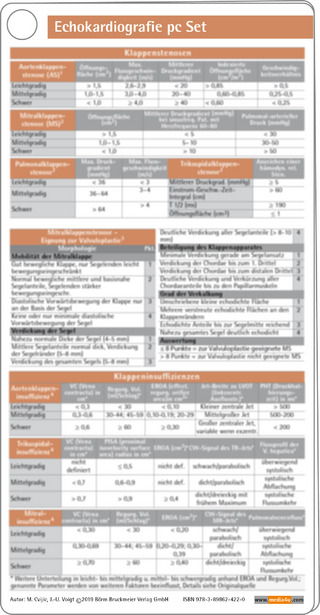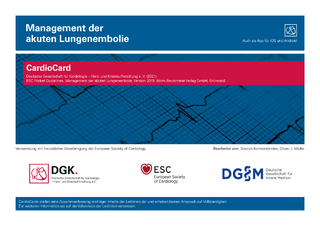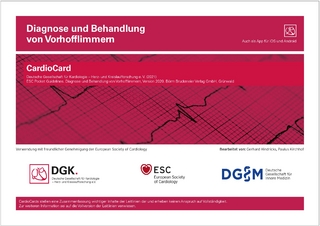
Pediatric Hypertension
Springer
978-3-031-06232-2 (ISBN)
- Titel wird leider nicht erscheinen
- Artikel merken
- Analysis of the implications of updated hypertension guidelines on identification of youth at highest cardiovascular risk
- Additional data on the proximate effects of high blood pressure in children in adolescents
- Further understanding of the links between high blood pressure in youth and surrogate markers of adult cardiovascular disease
The fifth edition is a readable, informative text that provides a comprehensive guide to the diagnosis, management and therapy of hypertension in children and adolescents, and presents new data that very clearly indicate that the origins of adult cardiovascular disease are rooted in pediatric hypertension. It will, as a result, be very important for therapeutic decisions and will also be highly relevant for those in internal medicine, who care for the millions of adults who have hypertension, cardiovascular disease and kidney disease. In this sense, the book fulfills the longstanding goal of showing that hypertension that begins in childhood is important to track, diagnose and treat, and that the present understanding of adult hypertension necessitates the study of blood pressure in youth.
The fifth edition has a similar structural format to the prior editions and covers all aspects of pediatric hypertension, from basic science research to the most recent clinical information.
lt;p>Joseph Flynn, MD, MS
Dr. Joseph Flynn is the Dr. Robert O. Hickman Endowed Chair in Pediatric Nephrology, Professor of Pediatrics, University of Washington, and Chief, Division of Nephrology, Seattle Children's Hospital. He is an internationally recognized expert in the treatment of hypertension in children, and recently chaired the American Academy of Pediatrics Subcommittee that developed the updated clinical practice guideline on high blood pressure in children and adolescents. Dr. Flynn served on the Council of the International Pediatric Nephrology Association from 2010-2019, and also on the Council of the American Society of Pediatric Nephrology, including 2 years as ASPN President (2012-14). He currently is a Board Member of the Renal Physicians Association and a member of the Nephrology sub-board of the American Board of Pediatrics. He currently serves as one of the Editors-in-Chief of the journal Pediatric Nephrology, is a member of the editorial boards of Hypertension, Blood Pressure Monitoring and The Journal of Pediatrics. He has contributed chapters to all 5 editions of the Pediatric Hypertension text, and edited the 3 previous editions of the text.
Julie R. Ingelfinger, MD
Julie R. Ingelfinger, MD is a professor of pediatrics at Harvard Medical School, senior consultant in pediatric nephrology at MassGeneral Hospital for Children at Massachusetts General Hospital, and a deputy editor of the New England Journal of Medicine. She is an internationally recognized hypertension specialist and consultative pediatric nephrologist. Her commitment to teaching has been reflected by receiving the Henry L. Barnett award from the AAP in 2009, the Founders Award from the American Society of Pediatric Nephrology in 2012, the National Kidney Foundation's Honors Award in 2018, and the Alumni Lifetime Achievement Award from Albert Einstein College of Medicine (2018).Dr. Ingelfinger has been involved in studies of the intrarenal renin angiotensin aldosterone system (RAAS) for many years. Her current projects focus on the role of the intrarenal renin angiotensin system in disease states and the role of maternal diabetes in kidney development and perinatal programming.
She is interested in innovative ways to teach writing and communication and has been an editor of Pediatric Hypertension in each of its 5 editions.
Tammy Brady, MD, PhD
Dr. Tammy Brady is an Associate Professor of pediatrics at the Johns Hopkins University School of Medicine where she serves as Vice Chair for Clinical Research and as a Core Faculty Member at the Welch Center for Prevention, Epidemiology and Clinical Research. She has focused her career on improving the care of children at increased cardiovascular disease risk through research and clinical innovation. She serves as the Medical Director of the Harriet Lane Kidney Center Pediatric Hypertension Program, and she directs a multi-disciplinary obesity hypertension clinic (ReNEW clinic; Reversing the Negative cardiovascular Effects of Weight). Dr. Brady is an expert in blood pressure measurement and blood pressure device validation. She is the co-chair of the Association for the Advancement of Medical Instrumentation (AAMI) Sphygmomanometer committee, the American professional society that develops American National Standards and technical reports regarding sphygmomanometer devices. She was Chair of a two-day meeting at the WHO where published guidance and specifications on blood pressure measuring devices was updated. She is also co-chair of the American Medical Association's Validated Device Listing Committee.
lt;p>Section I. Regulation of Blood Pressure and Pathophysiologic Mechanisms of Hypertension
- Neurohumoral and Autonomic Regulation of Blood Pressure
- Vasoactive Factors and Blood Pressure in Children
- Cardiovascular Influences on Blood Pressure
- Ions and Fluid Dynamics in Hypertension
- Uric Acid in the Pathogenesis of Hypertension
- Insulin Resistance and Other Mechanisms of Obesity Hypertension
- Monogenic and Polygenic Contributions to Hypertension
- Perinatal Programming and Blood Pressure
- Heritability and Familial Aggregation of Blood Pressure
- The Role of Dietary Electrolytes and Childhood Blood Pressure Regulation
- Endothelial Dysfunction and Vascular Remodeling in Hypertension
- Early life stress and blood pressure
- Salt Sensitivity in Childhood Hypertension
- Early vascular aging in childhood hypertension Section II. Assessment of Blood Pressure in Children: Measurement, Normative Data, Epidemiology
- Methodology of Casual Blood Pressure Measurement
- Value of Routine Screening for Hypertension in Childhood
- Development of Blood Pressure Norms and Definition of Hypertension in Children
- Ambulatory Blood Pressure Monitoring Methodology and Norms in Children
- Methodology and Applicability of Home Blood Pressure Monitoring in Children and Adolescents
- Epidemiology of Hypertension and CVD in Children Section III. Hypertension in Children: Etiologies and Special Populations
- Ethnic Differences in Childhood Blood Pressure
- Obesity Hypertension: Clinical Aspects
- Hypertension in Children with Type 2 Diabetes or the Metabolic Syndrome
- Primary Hypertension in Children
- White Coat Hypertension
- Hypertension in Chronic Kidney Disease
- Hypertension in End-Stage Renal Disease: Dialysis
- Hypertension in End-Stage Renal Disease: Transplantation
- Renovascular Hypertension, Vasculitis and Aortic Coarctation
- Endocrine Hypertension
- Neonatal and Infant Hypertension
- Sleep Apnea and Hypertension
- Hypertension in the Pregnant Teenager
- Cognitive and Behavioral Aspects of Childhood Hypertension
- Stroke and Childhood hypertension
- Substance-Induced Hypertension: Mechanisms and Management
- Hypertension in Oncology and Stem-cell Transplant Patients
- Hypertension in Older Adolescents and Young Adults
- Hypertension in the Developing World Section IV. Evaluation and Management of Pediatric Hypertension
- Diagnostic Evaluation of Pediatric Hypertension
- Sequelae of Hypertension in Children and Adolescents
- Cardiovascular Assessment of Childhood Hypertension
- The Role of ABPM in Evaluation of Hypertensive Target-Organ Damage
- Exercise Testing in Hypertension and Hypertension in Athletes
- Nonpharmacologic Treatment of Pediatric Hypertension
- Pharmacologic Treatment of Pediatric Hypertension
- Management of Hypertensive Emergencies
- Hypertension Care during Emergencies and Pandemics Section V. Hypertension Research in Pediatrics
- Hypertensive Models and Their Relevance to Pediatric Hypertension
- Cohort Studies, Meta-analyses, and Clinical Trials in Childhood Hypertension
- Changes in Drug Development Regulations and Their Impact on Clinical Trials
| Erscheint lt. Verlag | 29.4.2023 |
|---|---|
| Zusatzinfo | X, 990 p. 85 illus. in color. Print + eReference. |
| Verlagsort | Cham |
| Sprache | englisch |
| Maße | 155 x 235 mm |
| Themenwelt | Medizinische Fachgebiete ► Innere Medizin ► Kardiologie / Angiologie |
| Medizinische Fachgebiete ► Innere Medizin ► Nephrologie | |
| Medizin / Pharmazie ► Medizinische Fachgebiete ► Pädiatrie | |
| Schlagworte | ABPM • Blood Pressure Regulation • Cardiovascular Disease • Childhood Obesity • Chronic Kidney Disease • Endothelial Dysfunction • End-Stage Renal Disease • neurohumoral regulation • renovascular HTN • vasculitis |
| ISBN-10 | 3-031-06232-9 / 3031062329 |
| ISBN-13 | 978-3-031-06232-2 / 9783031062322 |
| Zustand | Neuware |
| Haben Sie eine Frage zum Produkt? |
aus dem Bereich


